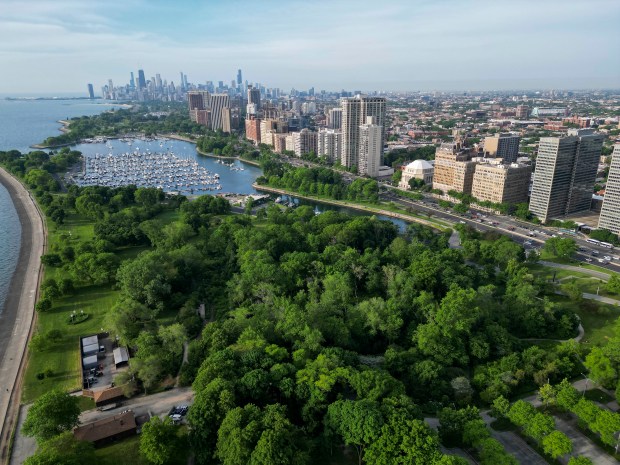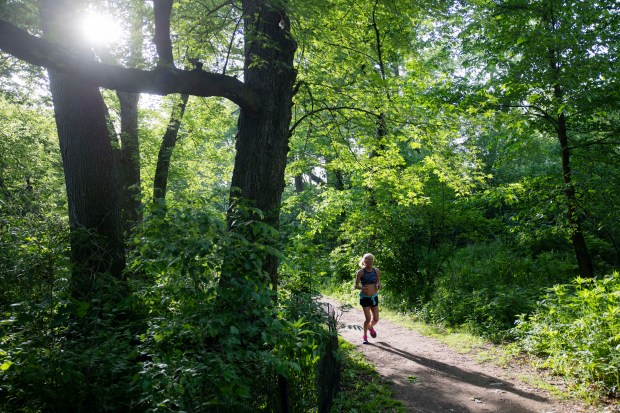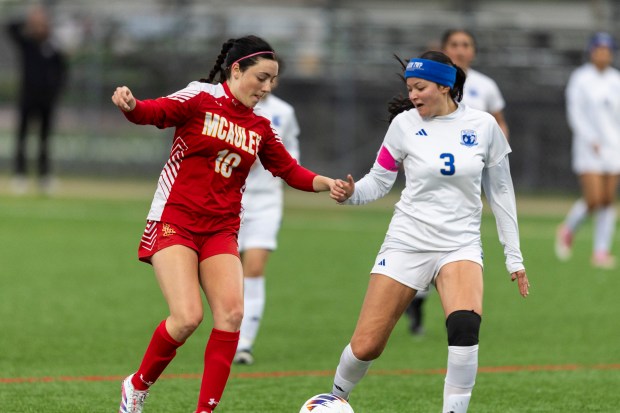For nearly two decades, Mark Weitekamper has lived in Chicago’s West Ridge neighborhood. For years, Weitekamper said, he’s been able to enjoy wildlife in the heart of the city.
“You can spot turtles, you can spot herons, you can sometimes get lucky and there’s mink, and river otter,” Weitekamper said. “We can, of course, see ducks and geese, and there’s a time when the frogs hatch and start jumping around.”
Weitekamper sees most of this wildlife at the West Ridge Nature Park, an urban habitat walking distance from his house. But, that kind of space isn’t available to many people in Chicago.
A new study from Lincoln Park Zoo found low-income Chicago neighborhoods see around five fewer mammal species than wealthier areas, according to Mason Fidino, a senior quantitative ecologist at the Urban Wildlife Institute at Lincoln Park Zoo.
Fidino published the study alongside other researchers around the country and looked specifically at how changing demographics in a neighborhood can affect wildlife.
Fidino said researchers used the census definition of gentrification to compare neighborhoods, using changes in racial makeup, education levels and housing prices, to determine whether a neighborhood was gentrified. Fidino then compared the number of mammals in gentrified and nongentrified neighborhoods.
“We know systemic racism can have an influence on the ecology of cities,” Fidino said. “We wanted to more closely examine how gentrification may be tied to variation in wildlife diversity.”
Fidino and his team distributed camera traps around the city and measured how many and which kind of mammals were observed in certain neighborhoods over three years. Researchers noticed a particular difference in Chicago. While most cities, including other large urban areas such as Seattle and Los Angeles, saw a difference of one to two species between neighborhoods, Chicago neighborhoods saw differences of three to five mammal types.
“We do see an increase in species richness in gentrified neighborhoods across the board,” Fidino said. “It’s usually not that big of a bump. But there are some cities where we actually saw a much larger effect, and that was specifically true in Chicago.”
Fidino said the team observed raccoons, coyotes, deer, squirrels, foxes and other mammals in neighborhoods throughout the Chicago area.
Still, many Chicago residents said they weren’t surprised by the disparities revealed in the study’s findings.
Anthony Moser, for example, lived in the McKinley Park neighborhood for more than a decade starting in 2008. He lives just a few blocks over in Brighton Park now and said he hasn’t seen much wildlife in either neighborhood.
Moser said he thinks that is likely because of a long history of pollution in the area. McKinley Park borders the Central Manufacturing District, the city’s first planned industrial district, created in 1905.
While the six-story buildings of the old manufacturing district remain largely empty and abandoned today, McKinley Park has remained the site of industrial development. After an asphalt plant was built near his home in 2018, Moser said pollution in the area got even worse.
“I could hear it every morning when I woke up, without even opening a window,” Moser said. “You could just smell it in your home. But this isn’t about one plant. It represented a larger history of placing industrial facilities and heavy polluting facilities in communities like ours.”
Winifred Curran, a geography professor at DePaul University, specializes in environmental gentrification. She said Moser’s experience is part of a bigger pattern –– industrial sites have historically been placed in lower-income neighborhoods, leading to noise, odor and pollution.
All of that could be affecting the amount of wildlife in those neighborhoods, she said. Many lower-income communities also tend to have less green space and more asphalt, which perpetuates the issue, she added.
But, Curran said, resolving that issue is difficult. When lower-income communities try to add green spaces, they often attract real estate developers, who begin housing projects that price residents out of the places they’ve been living for decades.

“The neighborhoods most likely to gentrify are those that have some kind of environmental amenity,” Curran said. “We see that there is a lot more attention paid to green space, to trees, to wildlife, to habitat restoration.”
A 2022 investigation by the Chicago Tribune found the city tended to plant trees and greenery in wealthier, whiter neighborhoods. Local organizations such as Openlands, a nature conservation organization, have since established initiatives and grants to help remedy those disparities and bring tree canopies to underserved neighborhoods.
Fidino said the study proves the need for urban green space development and solutions for environmental pollution that do not spur gentrification, specifically in low-income neighborhoods. He added that he hopes his study helps lead to environmental policies that equitably prioritize access to nature in the coming years.
“Urban green space should be considered a very key part of just city maintenance, rather than an economic development strategy,” Fidino said. “And it should never price people out of neighborhoods. The question is, how can we come up with a process that leads to just outcomes both environmentally and socially?”





